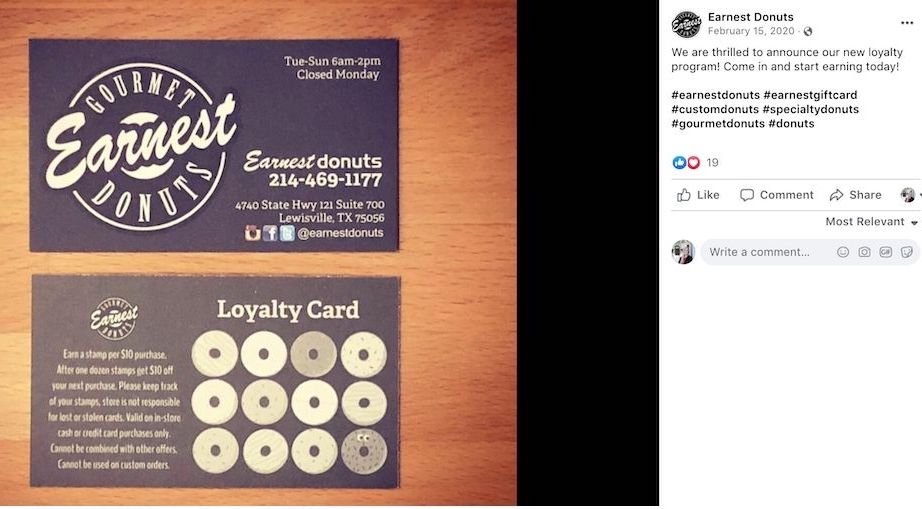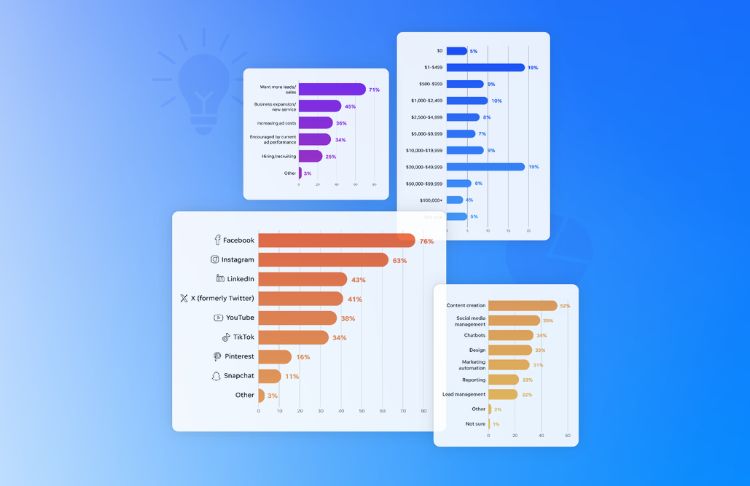Right now, inflation, as well as supply-chain issues and workforce challenges, are weighing heavily on businesses. Some 91% said these broader economic trends are having a negative impact on their business, according to a survey of 1,107 small business owners from Goldman Sachs 10,000 Small Businesses Voices [conducted in April]. Data from MetLife and the U.S. Chamber of Commerce found that 85% of small-business owners surveyed expressed concern about inflation. And 1 in 3 listed inflation as their top business concern.

We now know that this inflation is not temporary and will be with us for some time to come. The consumer price index accelerated 8.3% in April, more than the 8.1% estimate and near the highest level since 1982. This is understandably concerning for both business owners and consumers. And with the last period of sustained high inflation forty years behind us, so many business owners and operators are navigating this challenge for the first time.
Managers in that time had a very different perspective. In speaking with my father who was operating a small manufacturing business in the 1970s and ‘80s, he told me how he was so excited to get a loan at a 16.5% interest rate to buy a machine. He thought he got the steal of the century given where rates have been. I guess everything is relative!
So how can you keep your business running smoothly during times of inflation? We’re sharing:
- How inflation affects marketing
- 5 ways to adapt your business and marketing during inflation
- Insights to keep your business thriving during inflation
Does inflation affect marketing?
Short answer: Yes, inflation affects marketing in a few different ways.
For one, we’ve seen that inflation has impacted ad costs. For instance, search advertising cost per click has increased in 2022 versus what it was in 2021. This could be due to increased competition after a lag in spend during the onset of the pandemic as well as an increase in costs and budgets overall.

Inflation can also impact ad budgets. When more of your budget is spent on other areas of your business to account for inflation, you may find yourself with less budget to spend on your marketing strategies. However, we’ve also seen that ad budgets have increased, which could be due, in part, to inflation. Gartner found that marketing budgets now account for 9.5% of total company revenue in 2022.
Lastly, inflation can lead to less spending from consumers, which can mean less revenue coming in for your business. One survey found that 84% of people plan to cut back on spending due to higher prices.
All of these make for a difficult marketing landscape, but they also make it even more important to effectively market your business. Kind of a catch-22, right?
So what can you do? We’re sharing some practical tips to help you continue effectively marketing during inflation.
How to adapt your business to be profitable during times of inflation
Use these tips and best practices to adapt your business and marketing during inflation to continue growing.
1. Ruthlessly scrutinize and manage your costs and profit margins
There are a few different ways you can do this effectively.
Dissect and really understand your costs and profit margins
Getting a high-resolution view of spending is the first step. If you don’t already, try to get visibility into all of your expenses through accounting software like QuickBooks or a similar software. Understand how your profit varies by product or services. Also, don’t undervalue your own time in your calculations.
Get creative
For example, reduce the number of goods and services offered to stabilize costs. Can you close one day a week that is particularly not busy? Can you make something self-service that used to require an employee? Some examples are the use of QR for payments at restaurants, Dominos giving you a discount if you pick up your pizza, and hotels only cleaning your room if you request it.

Streamline and automate processes
Look for ways to reduce the number of steps involved in a task. Can technology help automate something that has been done by an employee or yourself? Can you simply stop doing something without much impact? Don’t undervalue your own time!
Drive employee productivity
Look for ways to make employees more productive. But keep in mind employee satisfaction and also look for ways to make your employees happy. You don’t want to lose your employees—especially in the midst of a labor shortage. You can incentivize performance with attractive benefits, rewards, and a great business culture.
Cut waste
Be ruthless about spending. What are “nice to have” purchases you can do without? Are there certain items that might not be too much but you just don’t use? Can you find monthly subscriptions or services to cancel?
Look through your accounting software and/or credit card statements carefully. Worst case you can bring back an expense if you realize you need it.
We’ve also seen how much we can do over Zoom/Teams meetings. Do you really need to travel and do something face to face? Sometimes yes, but often not.
Try to differentiate between strategic and nonstrategic spending. Don’t cut costs that could hurt your customers’ or employees’ experiences down the road.
Search for other suppliers
Maybe your particular supplier is more expensive than alternatives. Now is the time to compare costs and find a supplier who can help you keep your costs low.
Stock up on supplies now
If you are fairly confident prices will keep rising, you can buy more supplies now and be protected from a future price increase. Buy in bulk where prudent.
Related: Find out how to recession-proof your small business here.
2. Go on the offensive and get new customers
Volatility also brings opportunity! Are you now a lower-cost provider for a different customer segment?
This is where an effective marketing strategy comes in. You can identify free and low-cost ways to market your business and reach new customers.
For instance, have you tried running a Facebook contest or Instagram giveaway and putting a small budget behind a boosted post? This can help you reach new customers both organically and outside your audience.

You can also focus on building up your local SEO so you can capture local customers searching for your products and services.
This is not the time to stop all your marketing efforts. You need continued marketing to generate leads and keep revenue coming in.
3. Evaluate your cash and debt
Holding too much cash in an inflationary environment doesn’t make sense as cash is a depreciating asset, meaning its value will decline over time. But if you do have cash, something like Series I Savings Bonds could be a good, safe option for where to park extra funds (currently yielding 9.62%!).
While you always want to be careful about the level of debt, an inflationary market can be a good time to hold debt as the principal value is also deprecating.
One effective solution to inflation involves leaning on small business financing. There are many flexible funding options out there to help small businesses weather financial storms like inflationary periods. Solutions like a business line of credit or a merchant cash advance are options worth considering to help with cash flow challenges at your company.
4. Raise prices
While raising prices isn’t ideal, it may be helpful in combatting inflation’s effect on your business. In a recent study, 67% of small business owners said they have raised prices in response to inflationary pressures.

Avoid turning off customers with dramatic across-the-board price increases. Instead, raise prices slowly in modest increments and be strategic. Choose areas where customers are less likely to notice.
Look closely at your competitors to assess the right actions to consider. Be thoughtful about the type of customers you have and their price sensitivity (or lack thereof) for all or part of your products/services. Also, communicate the why behind the price increase.
Customers likely will understand and might be less agitated if they understand the drivers. We’re all experiencing this together, after all.
Crafting an effective price increase letter can help you position your increase and be transparent with customers.
5. Reward existing customers
It’s more cost-effective to retain a customer than to acquire a new one. Reward your existing customers—especially those supporting you during this time with their business. You can create a customer loyalty program that gives customers a discount after a certain number of purchases, offers a small discount after a purchase, or rewards customers who refer their networks with a free or discounted product or service.

Customers are feeling the impacts of inflation, so providing rewards and discounts can help you keep your customers coming back.
Adapt and thrive during inflation
Inflation is most likely temporary, although it hasn’t felt that way over the last few months. By making some adjustments and staying agile, you can keep your business running smoothly and continue growing during this challenging time.






